The Top 10 Mistakes In B2B Sales
May 24, 2021

Selling an innovation to enterprise customers (business-to-business or B2B sales) is one of the toughest nuts for startup founders to crack.
This text is an excerpt from the book Fast Forward: Accelerating B2B Sales for Startups, which was published on April 20. In their book, authors Matthias Hilpert, Investor, and Martin Giese, Managing Director of XPRENEURS Incubator, share their insights from 40 years of operational experience and from interviews with 32 internationally successful founders from companies like Celonis, Northvolt, and Peakon.
Mistake 1: Outsource Sales To "Experts" Too Early
If you don't have an IT background, you wouldn't presume to tell your development team how to program your product. So why would you try to sell your product yourself if you have no sales experience?
When it comes to sales at startups, the rules are different. In the beginning, it's mostly about establishing a continuous feedback loop between your business model, your product, and your customer. Only later will you standardize and optimize sales. We call these two phases "Explore & Learn" and "Standardize & Optimize."

Only you as a founder are in the central position in your startup, which is necessary for successful sales in the beginning. Only later will you need a sales organization to scale what you've started.
"Sales is such an important area in your business. You can't just hand it off to someone else. As a founder, you have to go through the process yourself to understand it. In the beginning, sales is a very entrepreneurial activity. How do you find someone with a need? How do you get contacts?"
- Bastian Nominacher, Cofounder & Co-CEO, Celonis
Mistake 2: Starting With a Market Segment That's Too Large
Many founders start sales with the vision that their product can be useful for many different use cases. And many B2B startups are indeed active in many different industries at some point. But if you target too many different customers from the start, you'll have a hard time finding a good product/market fit as well as customers.
"When you have a hammer, everything around you looks like a nail. You start hammering away like crazy around you, hoping to hit those nails. But then the china shatters and you realize that what you hit wasn't a nail at all. Still, there's no way around it: you have to keep hammering to find the nail. That's why early distribution is the founders' job. Until you find the nail, that is, get a clear and consistent market response for your product, it doesn't make sense to hire a sales team."
- Felix Reinshagen, Cofounder & CEO, NavVis
Mistake 3: Building a Product Without Constant Customer Feedback
Fortunately, this mistake has become rarer since many founders started using the Lean Startup methodology. But still, many teams (especially those with a technical background) spend too much time at their desks instead of going out and getting feedback from their customers.
What does feedback have to do with sales? When you ask someone to not only review your product, but to buy it, you're guaranteed to get honest feedback. A yes or no answer shows whether your product is so successful at alleviating "pain" that your customers will actually give you money for it.
"When we were struggling to get ahead in our early days, Paul Graham of Y Combinator gave us some brilliant advice. He said, 'Don't spend 18 months building any features first. Instead, spend just a week calling users. Tell them you're already offering all these features, and see what happens.' This week became the most depressing week in our lives. Out of the 500 people we called, maybe five were interested in using our service."
- Matt Robinson, Cofounder & Board Member, GoCardless
Mistake 4: Charging Too Little
Pricing is a complex and often underestimated mechanism for adding value to a transaction. That's why many founders initially charge too little for their product.
If your prices are too low, you'll run into a number of problems. A low price signals that the value of your product is lower, which creates distrust among your buyers. And if your price doesn't take into account the complex purchasing processes of your corporate customers, you risk your profitability.
Few B2B customers are put off by pricing (too) high. If everything else fits, you can always negotiate.
"We started with a price level that was rather low and not very degressive. And so our sales team often reported customers reacting to our price with "Wow, that's really cheap!". This, along with the investment we've put into our product (we now have more than 200 people working in product and engineering to improve and expand functionality), has made us confident that we can charge higher prices. In addition, we have changed the packaging structure to offer customers more flexibility, for example through add-ons."
- Jonas Rieke, COO, Personio
Learn how to avoid value debt in pricing, and avoid a slow startup death.
Mistake 5: Mistaking a Pilot For a Customer
When is a customer a customer? Many founders proudly tell their impatient investors about their first customer, when in reality they have only signed contracts for free pilot projects. Unfortunately, "death by 1000 pilot projects" is often the result. So make sure you're not just talking to innovation departments — and design your contracts for long-term collaboration from the outset.
"Until five or ten years ago, pilot projects were a great concept. The customer paid €5,000 or €10,000 and you knew they were serious about buying at some point. Today, every company has its digitization department, and their only job is to run pilots with startups — with no intention of ever buying. If your only customers are digitization departments without any line of business leaders involved, that's a problem."
- Alex Meyer, Cofounder & Partner, 42CAP
Mistake 6: Sticking With a Rigid Sales Process For Too Long
You can learn a lot from sales, especially from conversations with your customers. But you can only leverage those learnings if you have your processes set up for rapid iteration.
If you try to standardize your sales process too early (say, to delegate it to your team), you'll miss valuable lessons for your product and process.
"My advice to founders is to keep validating and re-evaluating the foundational pillars of your business by engaging with your customers."
- Peter Carlsson, Cofounder & CEO, Northvolt
Mistake 7: Not Pushing For a "No" Early Enough
Fearful of missing out on a deal, founders are often reluctant to push hard enough for a "no." In other words, they don't qualify their prospects thoroughly enough in the early stages of the sales process.
This way, you waste a lot of valuable resources on customers who are unlikely to sign a contract. At the same time, you're not spending enough time with the more accessible candidates.
"Every sales call I asked about, I always heard, "Great job! They're really interested!" I got tired of hearing that. In sales, you have to push for a "no." There's like a real "no" percentage in the early days — if you don't hear "no" often enough, you're not pushing hard enough!"
- Ben Stephenson, Cofounder & CEO, Impala
Mistake 8: Managing Sales From Your Gut
You can only manage what you measure. Unfortunately, many founders don't manage their CRM databases professionally enough. To manage sales, they rely on how things "feel" at the moment (or what their sales managers believe) instead of the factual data.
Curiously, the problem with SaaS products is sometimes the opposite: data overload. If you can measure literally anything, what should you focus on? Too much data makes it hard to keep track of your sales process and pipeline.
"I call it KYB - Know Your Business, which means the inputs to what you're doing. If you don't understand the relationship between inputs and outputs, there's a good chance it's going to work once but not be repeatable. And SaaS is all about that: how to make it repeatable and more efficient."
- Neil Ryland, Chief Revenue Officer, Peakon
Mistake 9: Underestimating the Human Factor For Growth
Finding team members for sales is difficult — perhaps the most difficult challenge of all. How are you supposed to know who you want on your team? And will the people you hire today still be the best choice for your startup a year or two from now?
Almost all founders struggle with the question of how to build their sales organization. Our advice: get help from experienced advisors and investors in sales to make the right decisions. At a certain level of complexity, only first-hand experience counts.
"Today, I wouldn't hire people from big companies who know exactly where we should be in 10 years — but don't know how to get there from here. I would only hire people who have also seen what our current phase looks like."
- Nicolas Dessaigne, Cofounder & Board Member, Algolia
Mistake 10: Focus All Sales Resources On Acquiring New Customers
More customers mean more revenue, so you're giving your all to keep growing your customer base. But what about your existing customers?
Many founders neglect the one segment of the market whose doors are already wide open for their offerings: long-time, happy customers.
"We could double the business in the next year if I didn't close a single new deal — just with new products for the seats we already sold today. That's how important upselling is to sustainable and efficient growth."
- Neil Ryland, Chief Revenue Officer, Peakon
About the Authors

Matthias Hilpert
Matthias Hilpert is a 20+ years operator turned investor. He is one of the top 30 angels backed by the European Investment Fund (EIF) in Germany. Matthias founded avalas.com, Germany’s first mobile internet portal, right out of university and spent more than 20 years in telecoms working for Vodafone, Orange, and Salt worldwide. His last operating role was the Chief Commercial Officer of Orange Switzerland running a EUR 1bn P&L. As CEO of MH2 Capital he has now turned full time investor in early stage technology, real estate and public assets. In 2021 Matthias published "Fast Forward - Accelerating B2B sales for startups" to help Founders worldwide excel at revenue growth.

Martin Giese
Martin Giese heads the XPRENEURS Incubator for deeptech startups in Munich as managing director and is co-author of two books and blogs on Startup Financing and B2B Sales for Startups. He is an active business angel with 13 investment (e.g. Kinexon, ORBEM, Engflow, Wappier, Cliniserve, Spyra).

